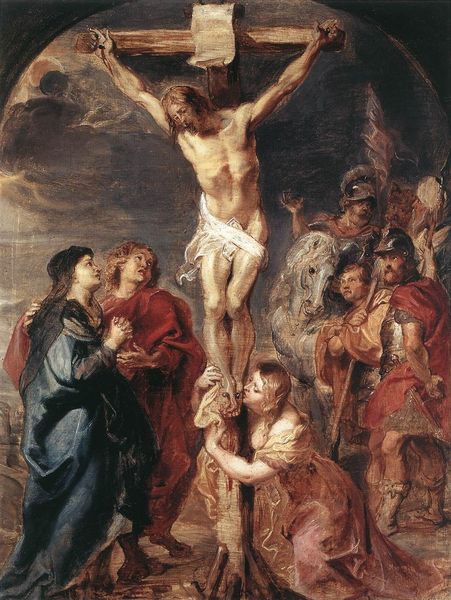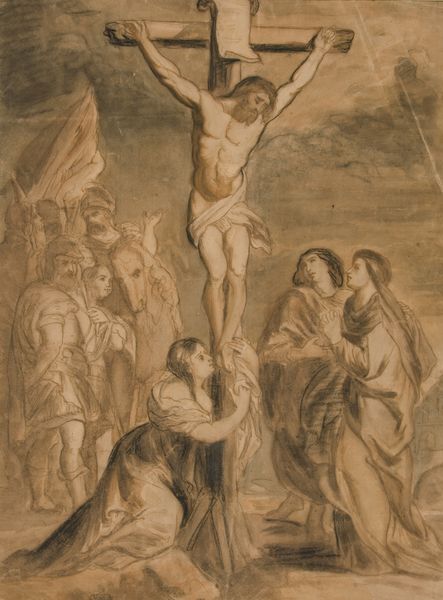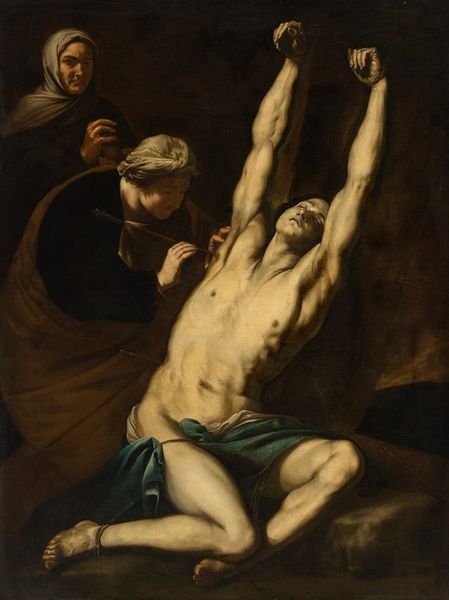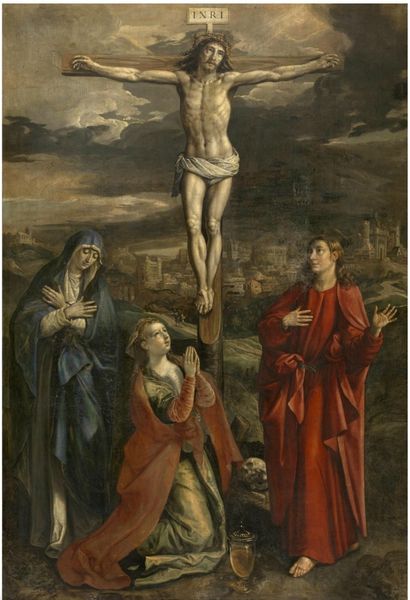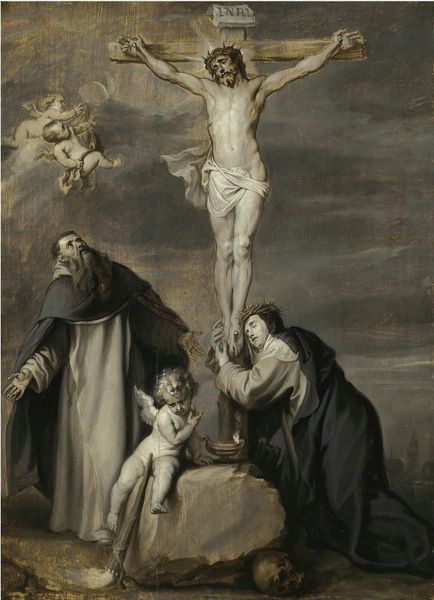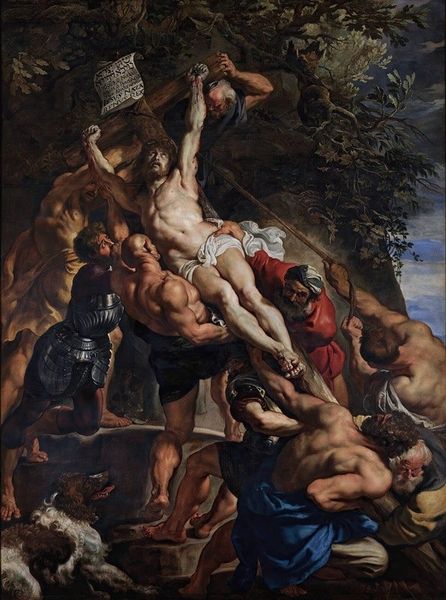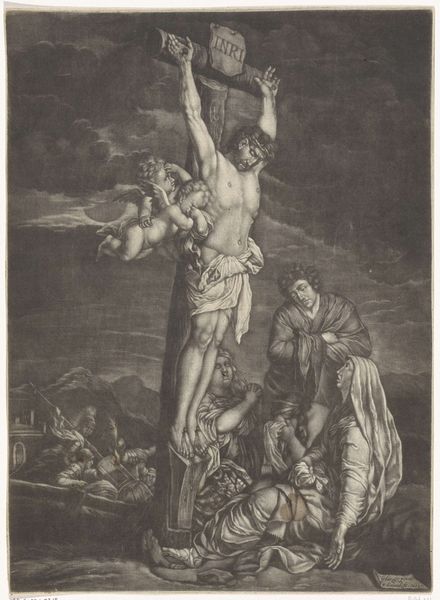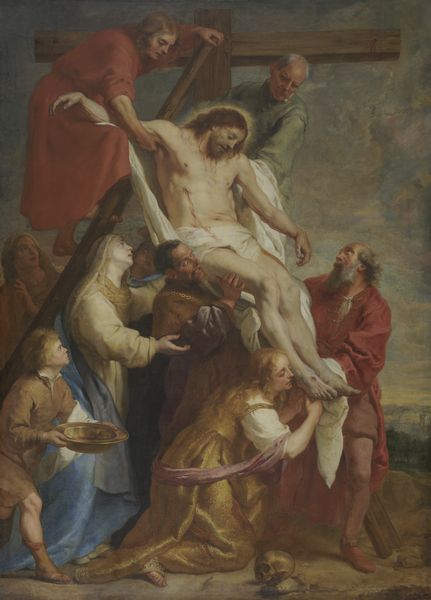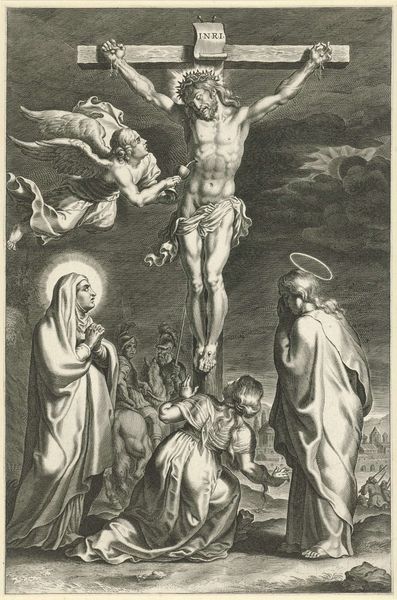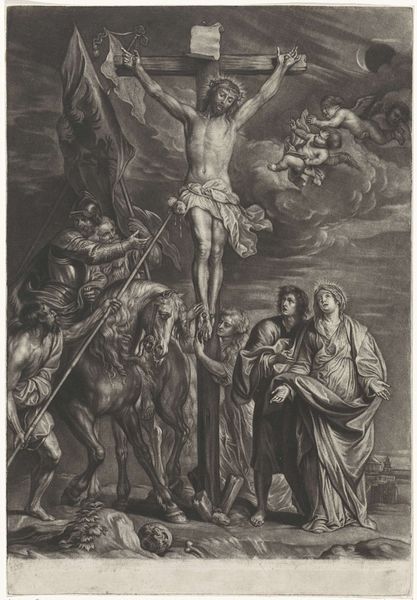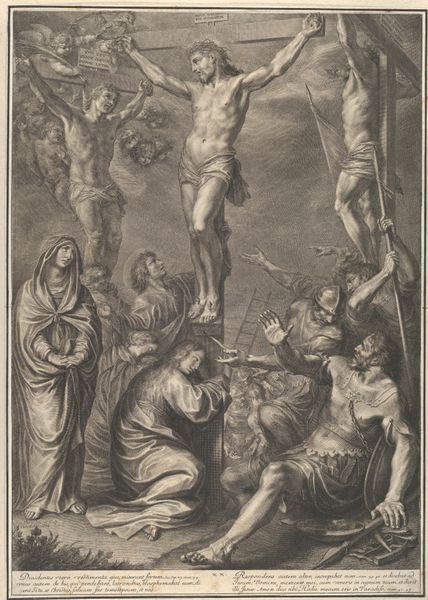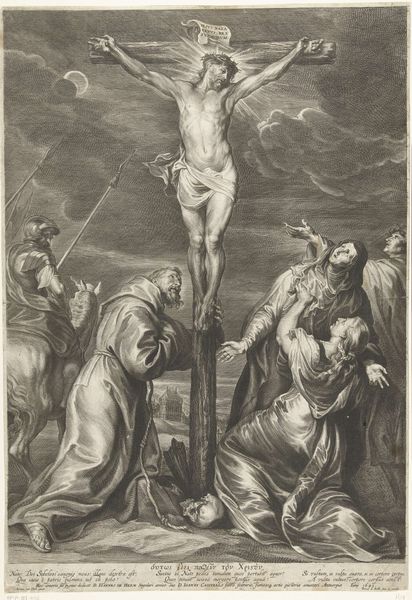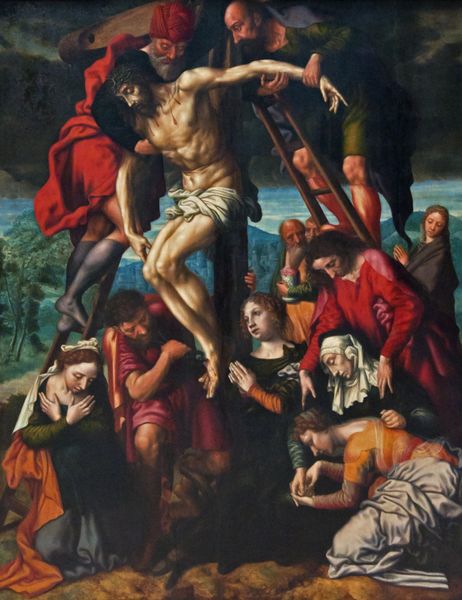
oil-paint
#
narrative-art
#
baroque
#
oil-paint
#
figuration
#
oil painting
#
chiaroscuro
#
flemish
#
history-painting
Copyright: Public Domain: Artvee
Curator: This powerful canvas, simply titled "Calvary," is attributed to Peter Paul Rubens. It is rendered in oil and exemplifies the dramatic chiaroscuro of the Baroque. Editor: My first reaction is just...visceral. It's like stepping into the middle of overwhelming grief and brutality. The figures are so raw. I feel pinned. Curator: Exactly. Rubens's command of light and shadow amplifies the emotional weight of the scene. He uses the history painting genre to focus on religious and deeply human themes. Consider the context—religious paintings offered opportunities to engage with notions of sacrifice, divine authority, and social order. Editor: It’s impossible to ignore the way women are portrayed here. One reaches upwards, in supplication and agony. The other, a delicate girl it seems, cradles the dying Christ's legs with such fragility, such helpless tenderness. Is this a comment on their powerlessness? A contrast to the very heavily armored man staring up right by their side? Curator: That's a very relevant interpretation. Indeed, these depictions contribute to larger discourses around gendered experiences of trauma and the perceived roles women played in the Passion narrative. The figures around the central cross amplify this, each seemingly caught in their own moral and emotional reckoning. The soldiers standing beneath project coldness; meanwhile, the other thief on the cross seems defiant, almost mocking. Editor: The dark background…almost sucks all the hope out of the painting. Is the story about salvation then, or just sheer human suffering? Even Christ himself appears almost…defeated in this light. All the life draining away, with just a few witnesses to his death. A tiny bit of gray sky appears in the back of the scene – but it just enhances the overall darkness that prevails. It all leaves a rather bitter aftertaste. Curator: Your reflections point to the nuances of Baroque art itself – its characteristic ambiguity, its unflinching look at difficult truths about the human condition. To be confronted with this artwork demands critical engagement and reminds us to investigate art with context, insight, and social awareness. Editor: Well, that's certainly put a heavy spin on my day. I definitely needed to check in with my understanding of power structures to digest this; all that being said, there's no doubt of its enduring emotional resonance. I feel it. I'm done looking now, I think!
Comments
No comments
Be the first to comment and join the conversation on the ultimate creative platform.

